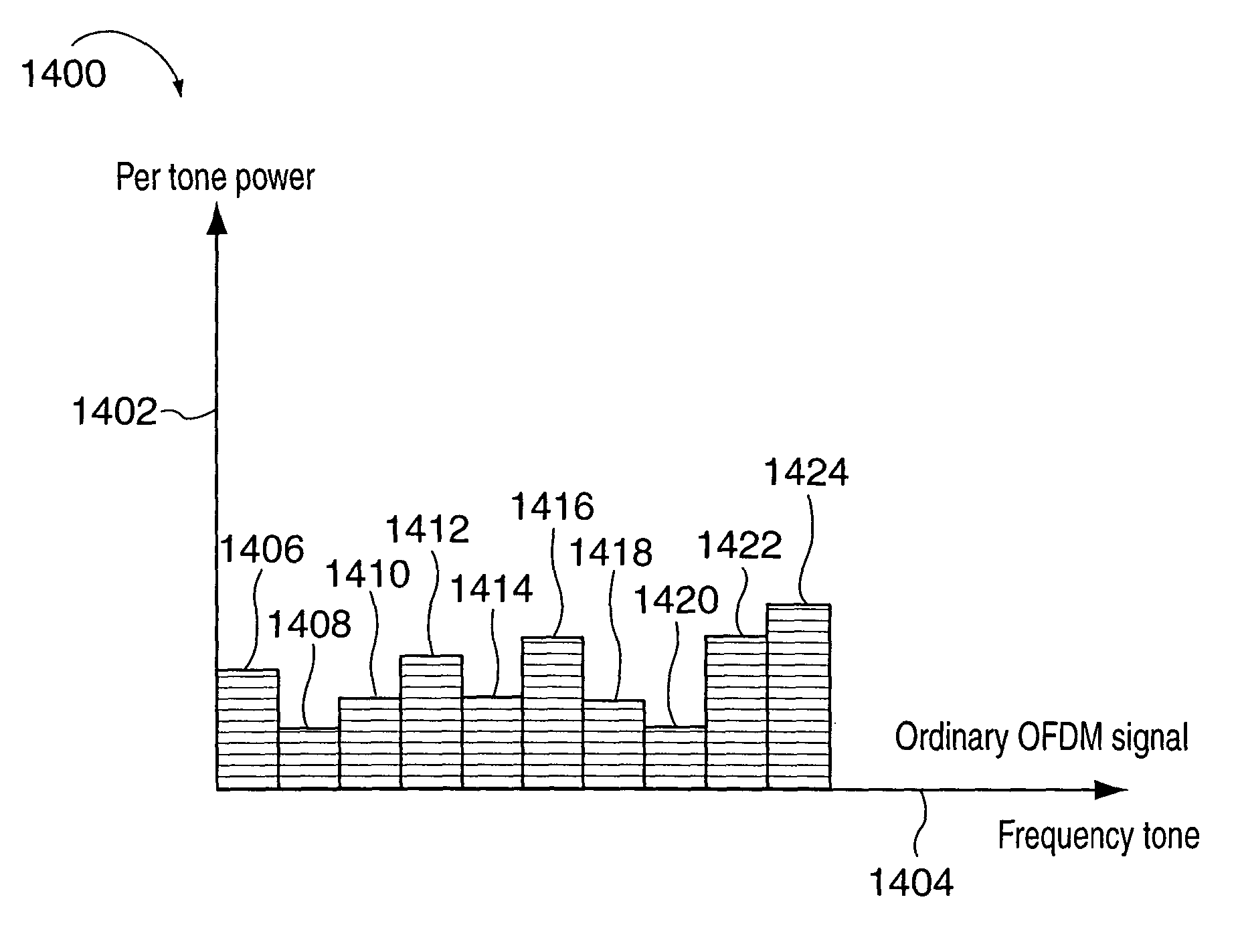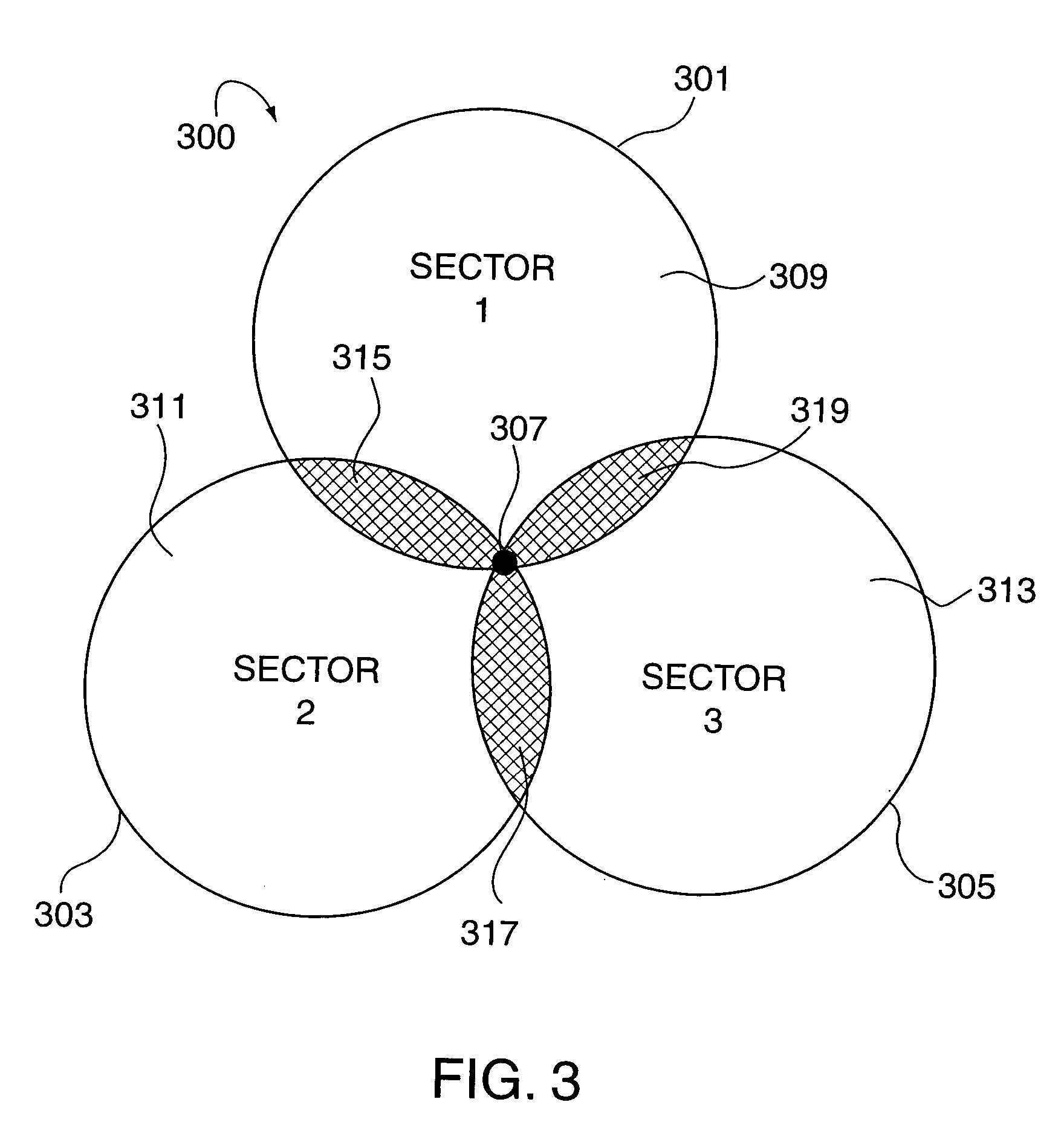Multiple access wireless communications system using a multisector configuration
a wireless communications system and multi-sector technology, applied in power management, orthogonal multiplex, instruments, etc., can solve the problems of limiting the actual capacity gain over an omni cell, complicating the use of sectorization in some systems, and not being able to achieve ideal signal separation in the real world, so as to improve or optimize system performance, improve transmission power, and increase throughput capability
- Summary
- Abstract
- Description
- Claims
- Application Information
AI Technical Summary
Benefits of technology
Problems solved by technology
Method used
Image
Examples
Embodiment Construction
[0058]With the OFDM spread spectrum system, the tones used in a given cell are all orthogonal. Therefore, the data hopping sequences and the physical channels do not interfere with each other. Given the wireless channel propagation characteristics, depending on its location, a wireless terminal may experience a large dynamic range of channel conditions measured in terms of signal-to-interference ratio (SIR) or signal-to-noise ratio (SNR). Such a property can be exploited to enhance the system capacity. For example, in accordance with the invention, a scheduler may optimally balance the power allocation in the traffic channel by serving simultaneously wireless terminals with dramatically different wireless channel conditions. In that case, a wireless terminal with a bad wireless channel condition may be allocated with a large portion of transmission power and possibly a small portion of bandwidth thereby gaining service robustness, while another wireless terminal with a good wireless...
PUM
 Login to View More
Login to View More Abstract
Description
Claims
Application Information
 Login to View More
Login to View More - R&D
- Intellectual Property
- Life Sciences
- Materials
- Tech Scout
- Unparalleled Data Quality
- Higher Quality Content
- 60% Fewer Hallucinations
Browse by: Latest US Patents, China's latest patents, Technical Efficacy Thesaurus, Application Domain, Technology Topic, Popular Technical Reports.
© 2025 PatSnap. All rights reserved.Legal|Privacy policy|Modern Slavery Act Transparency Statement|Sitemap|About US| Contact US: help@patsnap.com



